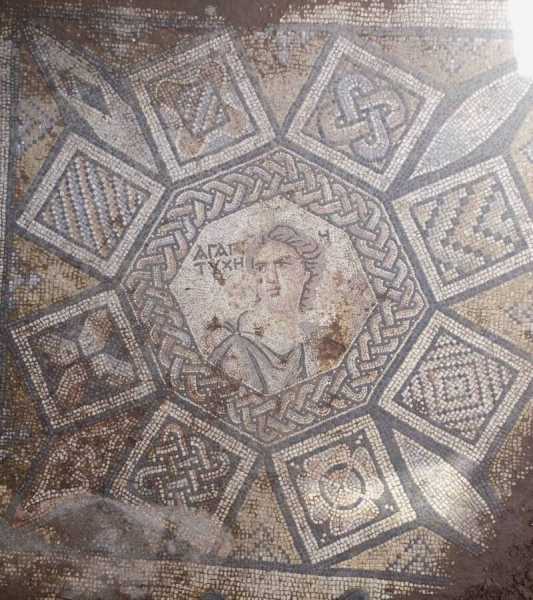This fully preserved mosaic object, discovered at a depth of eight feet in the city of Maryamin, dates back to the Roman period and is six feet high and 14 feet wide.

Wikimedia CommonsDrawing of Tyche, goddess of fortune and good luck, 4th century CE
The newly discovered mosaic measures approximately 14 feet wide and six feet high. In the center is an image of Tyche, the Greek goddess of fortune and fate, surrounded by eight braid-shaped frames. On either side of the goddess are geometric decorative patterns characteristic of the Roman period.
Syrian archaeologists announced the discovery in a post on Facebook.
The goddess Tyche, known as Fortuna to the Romans, represented luck, chance, and fate. Her influence was particularly strong during the Hellenistic period (from the death of Alexander the Great in 323 BCE to the death of Cleopatra in 30 BCE), a time of great uncertainty and turmoil, when a person’s destiny could change in an instant. Tyche was seen as a figure capable of bestowing both incredible wealth and utter ruin, with no predictability.
Sourse: www.allthatsinteresting.com





